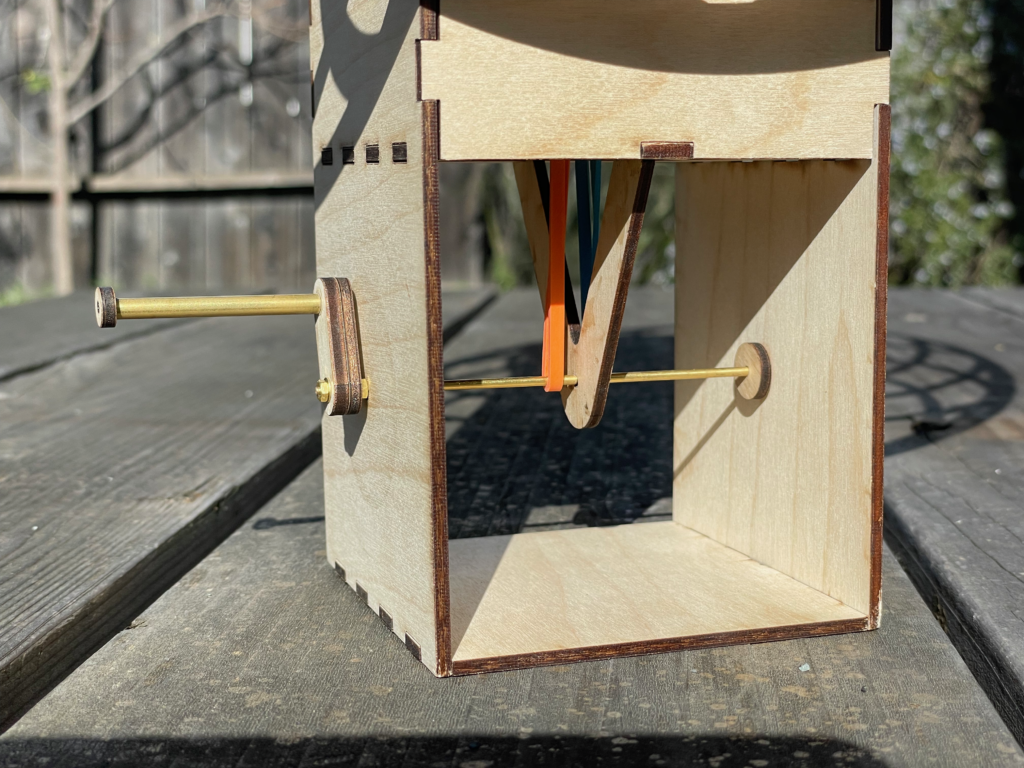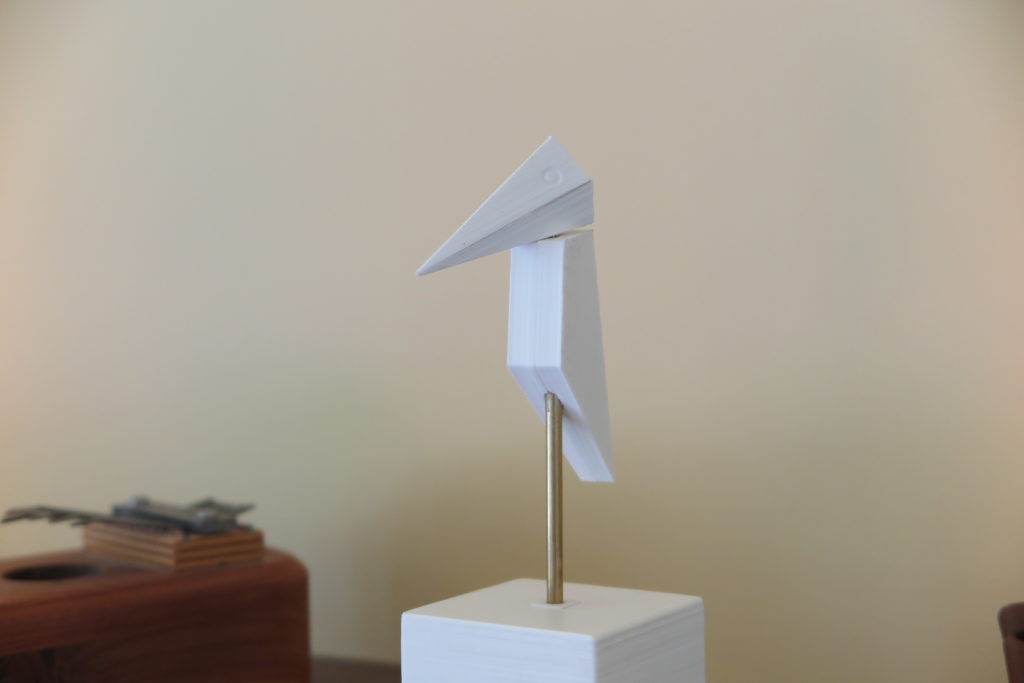After the first weekend of building automata kits at the Sunday Streets SF, I decided to make another that was larger and more eye catching.
This version builds on the windmill which used a rubber band to transfer the motion of the crank to the axel. In this case there are two bands and two axels. By twisting the bands in opposite directions as they are connected to the axels, they spin in opposite directions.
At this size, the elasticity of the rubber bands and friction in the axels lead to varying speeds. It seems that the bands can stretch for a bit, building up enough energy to spin the axel, then they spin for a while before losing momentum. At first I was frustrated by this effect, but I could not solve it by using different sized bands. As I showed it around, folks seemed to like the variety… so there you go. It’s a feature, not a bug.





